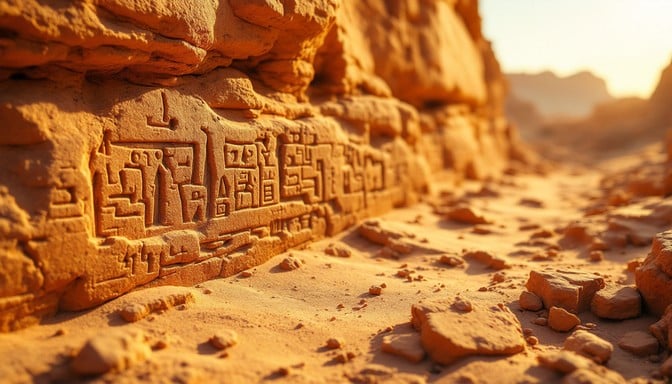Did a Prehistoric Comet Change the Course of Human History? New Clues Emerge
Published May 22, 2024 • Adapted for Ancient Origins & Architecture Enthusiasts
What if a comet, not climate alone, was responsible for the sudden collapse of ecosystems at the end of the last Ice Age—and maybe even for the downfall of early human cultures?
That’s exactly what new research by University of South Carolina archaeologist Christopher Moore is suggesting. And while there’s still no smoking crater, the indirect evidence is piling up—and it’s fascinating.
The Younger Dryas Mystery
Roughly 12,800 years ago, just as Earth was warming after the Ice Age, the Northern Hemisphere was suddenly plunged back into a deep freeze. This period is known as the Younger Dryas—a dramatic climate reversal that’s long puzzled scientists.
Many researchers have pointed to shifting ocean currents or volcanic eruptions. But an alternative theory, the Younger Dryas Impact Hypothesis, proposes something far more explosive: that fragments of a giant comet slammed into Earth or exploded in the atmosphere, sparking massive fires, global cooling, and the collapse of ecosystems.
Dig Sites, Clues, and Cosmic Fingerprints
Moore and his team have been looking deep into ancient soil layers—sediments that were exposed during the Younger Dryas—to uncover signs of a cosmic catastrophe. These aren’t just random dig sites. They’re carefully chosen places where the land has preserved a memory of the moment Earth may have been shaken by the sky.
Here’s what they’ve found:
-
Combustion aerosols in Greenland ice cores: These chemical markers suggest vast wildfires ignited at the start of the Younger Dryas.
-
Platinum in sediments from South Carolina to Syria: Rare in Earth’s crust but common in comets, this precious metal shows up right where you’d expect if something otherworldly had struck.
-
Iron microspherules: Tiny, glassy spheres formed when molten iron is flung into the air by intense heat. Think of them as the splash marks of a fiery explosion.
And now, for the first time, Moore has uncovered shock-fractured quartz at multiple sites—including South Carolina, Maryland, and New Jersey. These microscopic mineral grains show telltale signs of exposure to sudden, incredible pressure and heat—just what you’d expect from a blast in the sky or an impact on Earth.
As Moore puts it: “It’s like putting 75 elephants on a quarter.”
Where’s the Crater?
Skeptics often ask: if a comet hit Earth, why don’t we see a crater?
Moore has an answer. Some impact simulations show that comets can detonate mid-air, just before hitting the ground. These so-called airbursts can generate enormous shockwaves and fireballs that burn forests, melt soil, and scatter microscopic debris—without ever leaving a giant hole.
In other words, we might not need a crater to tell us a comet came calling.
Extinction, Fire, and the Fate of Ancient Worlds
Why does this matter to fans of ancient history?
Because this event might have marked a turning point not just for mammoths and saber-toothed cats—but for early human societies, too.
The enormous fires could have wiped out plant life across entire regions. Climate shifts would have disrupted food sources, migration routes, and possibly even the survival of ancient communities whose stories have been lost to time.
As Moore says: “I suspect it played a big role in leading to the extinction of the megafauna.” And possibly more than that.
Could It Happen Again?
If a massive comet did strike Earth 12,800 years ago… could it happen again?
Unfortunately, yes.
Since 2001, military satellites have detected over 20 large meteors exploding in the atmosphere with nuclear-level force. Most of them were far above the ground—but not all.
“We’re being hit by these things more than most people think,” Moore warns. “It’s just a matter of time before we get something like the Younger Dryas impact.”
Still, he’s not panicking. Most future events are likely to cause local damage, not global catastrophe. But the past is a warning—and a mystery worth exploring.
Why Ancient Clues Still Matter
For those of us who love ancient structures, lost civilizations, and the deep past, this research adds another layer to our understanding of ancient history.
If the Younger Dryas event really was caused by a comet, it could help explain the sudden changes we see in prehistoric architecture, tool use, migration, and perhaps even the legends of fire from the sky found in early mythologies.
We may never find a crater—but we’re getting closer to uncovering the truth of what happened 12,800 years ago. And that story is still being written… in the soil beneath our feet.
Source: https://sc.edu/study/colleges_schools/artsandsciences/about/news/2024/archaeologists_uncover_new_evidence_for_prehistoric_comet.php






